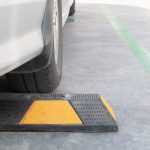Introduction
Definition of Speed bumps & Humps
Speed bumps & Humps are traffic calming devices that are designed to reduce vehicle speeds in specific areas. They are typically made of durable materials such as asphalt, concrete, or rubber and are installed on roadways to slow down vehicles. Speed bumps are usually shorter and wider, while speed humps are longer and flatter. These devices help to improve safety by forcing drivers to slow down and pay attention to their surroundings. They are commonly found in residential areas, school zones, and parking lots. The installation of Speed bumps & Humps is an effective way to control speed and promote safer driving practices.
Importance of Speed bumps & Humps
Speed bumps & Humps play a crucial role in ensuring road safety and controlling vehicle speed. They are designed to slow down vehicles and encourage drivers to be more cautious while driving. The importance of Speed bumps & Humps cannot be overstated, as they help prevent accidents, reduce the severity of collisions, and protect pedestrians and other road users. These traffic calming measures are especially important in areas with high pedestrian traffic, such as school zones, residential areas, and parking lots. By effectively reducing speed, Speed bumps & Humps contribute to creating a safer and more secure environment for everyone on the road.
Overview of the article
The article titled ‘Innovations in Speed Bump and Hump Manufacturing’ provides a comprehensive overview of the advancements in the manufacturing of Speed bumps & Humps. It explores the various innovative techniques, materials, and designs that have revolutionized the industry. The article delves into the benefits of these advancements, including improved durability, enhanced safety features, and reduced environmental impact. Additionally, it highlights the importance of Speed bumps & Humps in traffic management and their role in promoting road safety. Overall, this article is a valuable resource for anyone interested in understanding the latest developments in speed bump and hump manufacturing.
Traditional Speed Bump Manufacturing
Materials used in traditional speed bump manufacturing
Traditional speed bumps are typically made using materials such as concrete, asphalt, or rubber. Concrete speed bumps are durable and can withstand heavy traffic, but they can be expensive to install and repair. Asphalt speed bumps are more cost-effective and can be easily installed, but they may not be as durable as concrete. Rubber speed bumps are commonly used due to their flexibility and ability to absorb impact, making them ideal for reducing vehicle speed. However, they may require more frequent maintenance to ensure their effectiveness. Overall, the materials used in traditional speed bump manufacturing are chosen based on factors such as durability, cost-effectiveness, and impact absorption.
Manufacturing process of traditional speed bumps
The manufacturing process of traditional speed bumps involves several steps. Firstly, a suitable location for the speed bump is selected, taking into consideration factors such as traffic flow and speed limits. Once the location is determined, the ground is prepared by clearing any debris or obstacles. Next, a mold is created using a durable material such as concrete or asphalt. The mold is then placed on the prepared ground and filled with the chosen material. After the material has hardened, the mold is removed, leaving behind the shape of the speed bump. Finally, finishing touches such as painting or adding reflective markers may be done to enhance visibility and ensure safety. This traditional manufacturing process has been used for many years and has proven to be effective in slowing down vehicles and improving road safety.
Advantages and disadvantages of traditional speed bumps
Traditional speed bumps have been widely used for controlling vehicle speed in residential areas and parking lots. One of the main advantages of traditional speed bumps is their effectiveness in slowing down vehicles and reducing the risk of accidents. They are also relatively easy and cost-effective to install. However, traditional speed bumps have some drawbacks. For instance, they can cause discomfort and inconvenience to drivers and passengers, especially when driving at higher speeds. Additionally, they can contribute to increased noise pollution and vehicle wear and tear. Despite these disadvantages, traditional speed bumps continue to be a popular choice for traffic calming measures.
Innovations in Speed Bump Manufacturing
Introduction to innovative speed bump materials
In recent years, there have been significant advancements in the manufacturing of Speed bumps & Humps. One area of innovation is the development of new materials that enhance the effectiveness and durability of these traffic calming devices. Traditional speed bumps were often made of concrete or asphalt, which had limitations in terms of their ability to withstand heavy traffic and extreme weather conditions. However, with the introduction of innovative materials such as rubberized compounds and high-density plastics, Speed bumps & Humps have become more resilient and reliable. These new materials offer improved shock absorption, reducing the impact on vehicles and providing a smoother driving experience. Additionally, they are designed to be resistant to cracking, fading, and warping, ensuring a longer lifespan and reduced maintenance costs. The use of innovative speed bump materials not only enhances road safety but also contributes to sustainable transportation solutions by reducing the need for frequent replacements. As technology continues to advance, we can expect further innovations in speed bump and hump manufacturing, leading to safer and more efficient roadways.
New manufacturing techniques for speed bumps
In recent years, there have been significant advancements in the manufacturing techniques for speed bumps. These innovations have revolutionized the way speed bumps are produced, resulting in improved durability, efficiency, and overall effectiveness. One of the key developments is the use of high-quality materials that are resistant to wear and tear, ensuring that speed bumps can withstand heavy traffic and extreme weather conditions. Additionally, new manufacturing processes, such as injection molding and extrusion, have allowed for the creation of speed bumps with precise dimensions and consistent quality. These techniques enable manufacturers to produce speed bumps that are uniform in shape, size, and performance, enhancing road safety for drivers and pedestrians alike. With these new manufacturing techniques, speed bumps are now more reliable, long-lasting, and environmentally friendly, making them an essential component of modern road infrastructure.
Benefits of innovative speed bumps
Innovations in speed bump and hump manufacturing have brought about numerous benefits for road users. These innovative speed bumps are designed to enhance safety and improve traffic flow. One of the key benefits is the reduction of vehicle speed, which helps to prevent accidents and promote pedestrian safety. Additionally, the use of advanced materials and construction techniques has made these speed bumps more durable and long-lasting, reducing the need for frequent maintenance. Moreover, the innovative designs of these speed bumps ensure a smoother driving experience, minimizing discomfort for drivers and passengers. Overall, the implementation of innovative speed bumps is a significant step towards creating safer and more efficient road systems.
Traditional Speed Hump Manufacturing
Materials used in traditional speed hump manufacturing
Traditional speed humps are typically made using materials such as concrete, asphalt, or rubber. Concrete is a commonly used material due to its durability and strength. It can withstand heavy traffic and harsh weather conditions, making it a reliable choice for speed hump manufacturing. Asphalt is another popular material, known for its flexibility and cost-effectiveness. It can be easily molded into various shapes and sizes, making it suitable for different road conditions. Rubber speed humps are also commonly used, especially in areas where noise reduction is a priority. They are made from recycled rubber materials, making them an environmentally friendly option. Overall, the materials used in traditional speed hump manufacturing are chosen based on their durability, flexibility, and environmental impact.
Manufacturing process of traditional speed humps
The manufacturing process of traditional speed humps involves several steps. First, a mold is created based on the desired shape and size of the speed hump. This mold is then filled with a mixture of asphalt or concrete, which is compacted and leveled to ensure a smooth surface. Once the mixture has hardened, the mold is removed, leaving behind a solid speed hump. Finally, the speed hump is painted with reflective markings to improve visibility. This manufacturing process has been used for many years and has proven to be effective in creating durable and reliable speed humps.
Pros and cons of traditional speed humps
Traditional speed humps have been widely used for traffic calming purposes for many years. One of the main advantages of traditional speed humps is their effectiveness in reducing vehicle speeds. They force drivers to slow down, which can improve safety in areas with high pedestrian or cyclist traffic. Additionally, traditional speed humps are relatively easy to install and maintain. However, there are also some drawbacks to consider. One of the main concerns is the discomfort they can cause to drivers and passengers. The abrupt change in elevation can lead to vehicle discomfort and potential damage if not approached at an appropriate speed. Furthermore, traditional speed humps can create noise and vibration, especially for larger vehicles. Overall, while traditional speed humps have proven to be effective in reducing speeds, they also come with certain limitations that need to be taken into account.
Innovations in Speed Hump Manufacturing
Introduction to innovative speed hump materials
In recent years, there has been a significant focus on developing innovative materials for speed hump manufacturing. These materials aim to enhance the performance and durability of speed humps, while also considering environmental sustainability. One of the key advancements in speed hump materials is the use of recycled rubber. By utilizing recycled rubber, manufacturers are able to reduce waste and contribute to a more circular economy. Additionally, these innovative materials offer improved flexibility and impact resistance, ensuring a longer lifespan for speed humps. With the introduction of these innovative speed hump materials, cities and communities can benefit from safer and more sustainable traffic calming solutions.
New manufacturing techniques for speed humps
In recent years, there have been significant advancements in the manufacturing techniques for speed humps. These innovations have revolutionized the way speed humps are produced, resulting in more durable and efficient products. One of the new techniques involves the use of high-quality materials that are resistant to wear and tear, ensuring a longer lifespan for the speed humps. Additionally, new manufacturing processes have been developed to create speed humps with precise dimensions and consistent quality. This ensures that the speed humps are effective in slowing down vehicles and improving road safety. Overall, these new manufacturing techniques for speed humps have greatly contributed to enhancing the effectiveness and reliability of these traffic calming devices.
Advantages of innovative speed humps
Innovations in speed bump and hump manufacturing have brought about several advantages in terms of road safety and driver comfort. These innovative speed humps are designed to reduce vehicle speed effectively while ensuring a smooth and comfortable ride for drivers. One of the key advantages is their ability to minimize the risk of accidents by forcing drivers to slow down and pay attention to the road. Additionally, these speed humps are constructed using durable and high-quality materials, making them long-lasting and resistant to wear and tear. They also have a modular design, allowing for easy installation and customization based on specific road requirements. With their innovative features, these speed humps contribute to creating safer and more efficient road networks for both drivers and pedestrians.
Conclusion
Summary of key points
The article titled ‘Innovations in Speed Bump and Hump Manufacturing’ explores the latest advancements in the production of Speed bumps & Humps. In the ‘Summary of key points’ section, it is important to highlight the main takeaways from the article. The advancements in speed bump and hump manufacturing have led to improved safety measures on roads, reducing accidents and enhancing traffic management. These innovations include the use of durable materials, such as rubber and plastic, which provide better resistance to wear and tear. Additionally, new designs and installation techniques have resulted in Speed bumps & Humps that are more effective in controlling vehicle speed and ensuring smoother rides. Overall, the article emphasizes the significance of these innovations in creating safer and more efficient road systems.
Future prospects of speed bump and hump manufacturing
The future prospects of speed bump and hump manufacturing look promising. With the increasing focus on road safety and the need to reduce vehicle speeds, the demand for innovative and effective Speed bumps & Humps is expected to grow. Manufacturers are investing in research and development to create advanced materials that are durable, eco-friendly, and capable of effectively slowing down vehicles without causing damage. Additionally, advancements in technology, such as the integration of sensors and smart systems, are being explored to enhance the functionality and effectiveness of Speed bumps & Humps. These developments are likely to improve road safety and contribute to the overall efficiency of transportation systems in the future.
Closing thoughts
In conclusion, the advancements in speed bump and hump manufacturing have revolutionized road safety and traffic management. These innovations have not only improved the durability and effectiveness of Speed bumps & Humps but also enhanced their visibility and aesthetic appeal. With the use of new materials and advanced manufacturing techniques, Speed bumps & Humps are now more efficient in slowing down vehicles and ensuring safe driving speeds. Additionally, the integration of smart technologies, such as sensors and LED lights, has further enhanced their functionality and made them more adaptable to changing traffic conditions. Overall, these innovations have contributed significantly to creating safer and more efficient roadways, benefiting both drivers and pedestrians alike.










